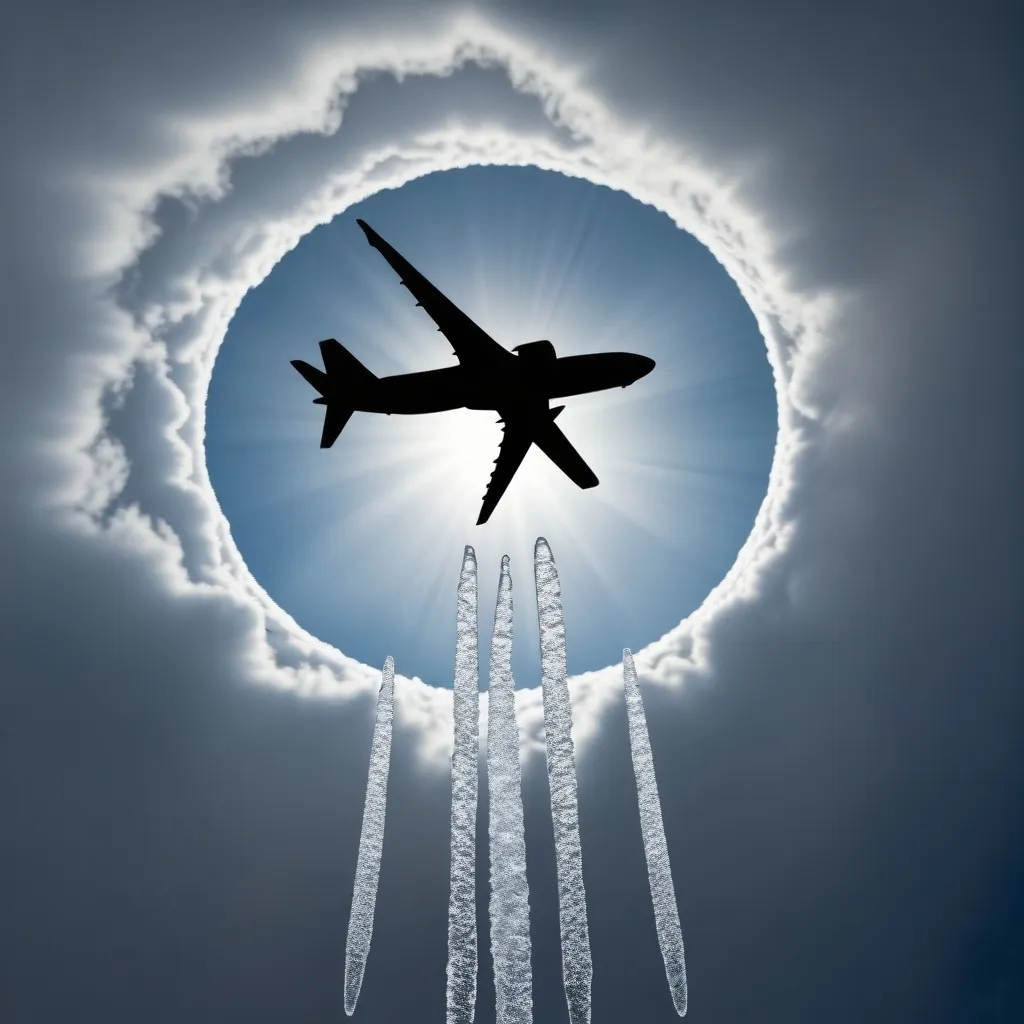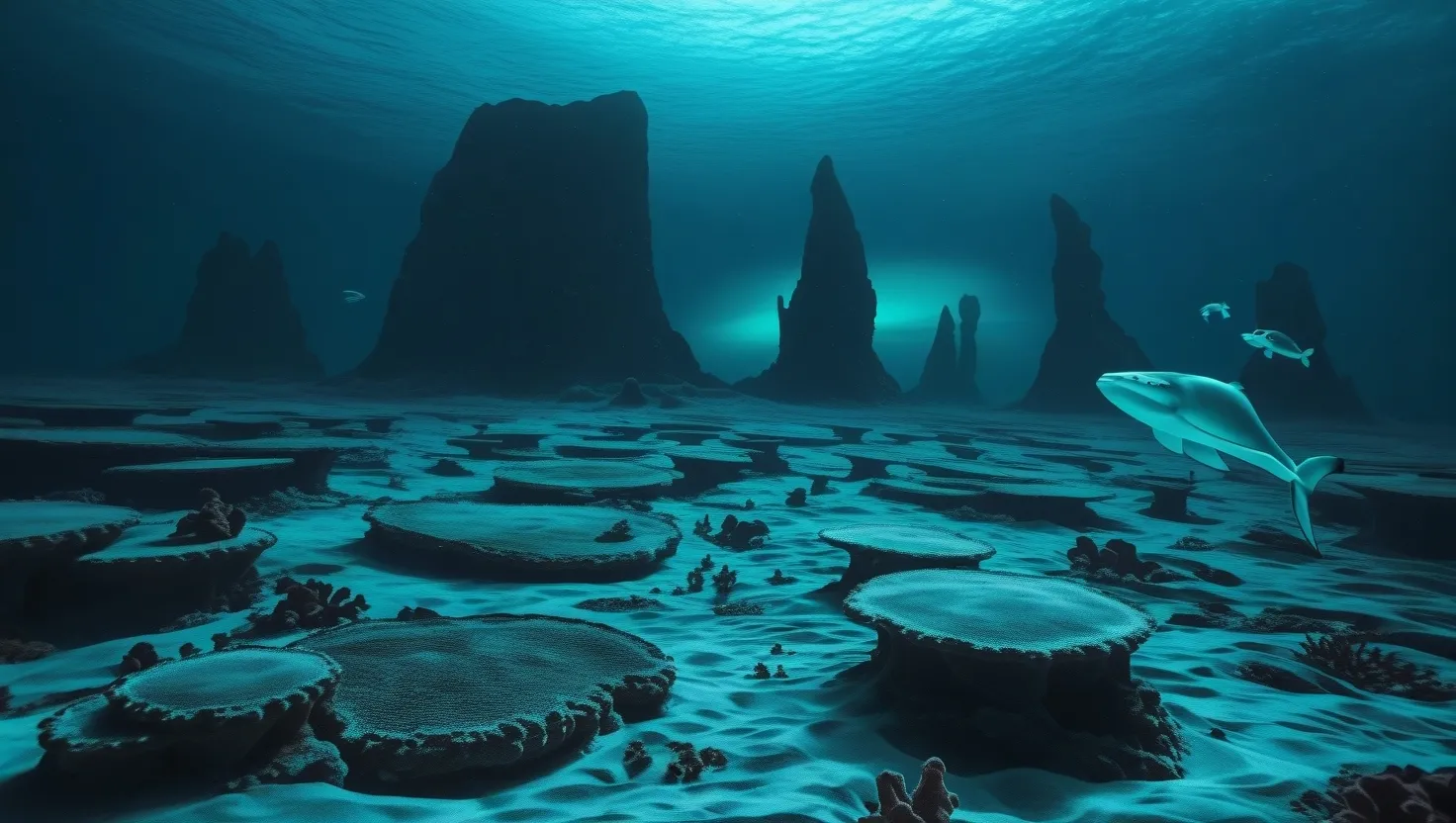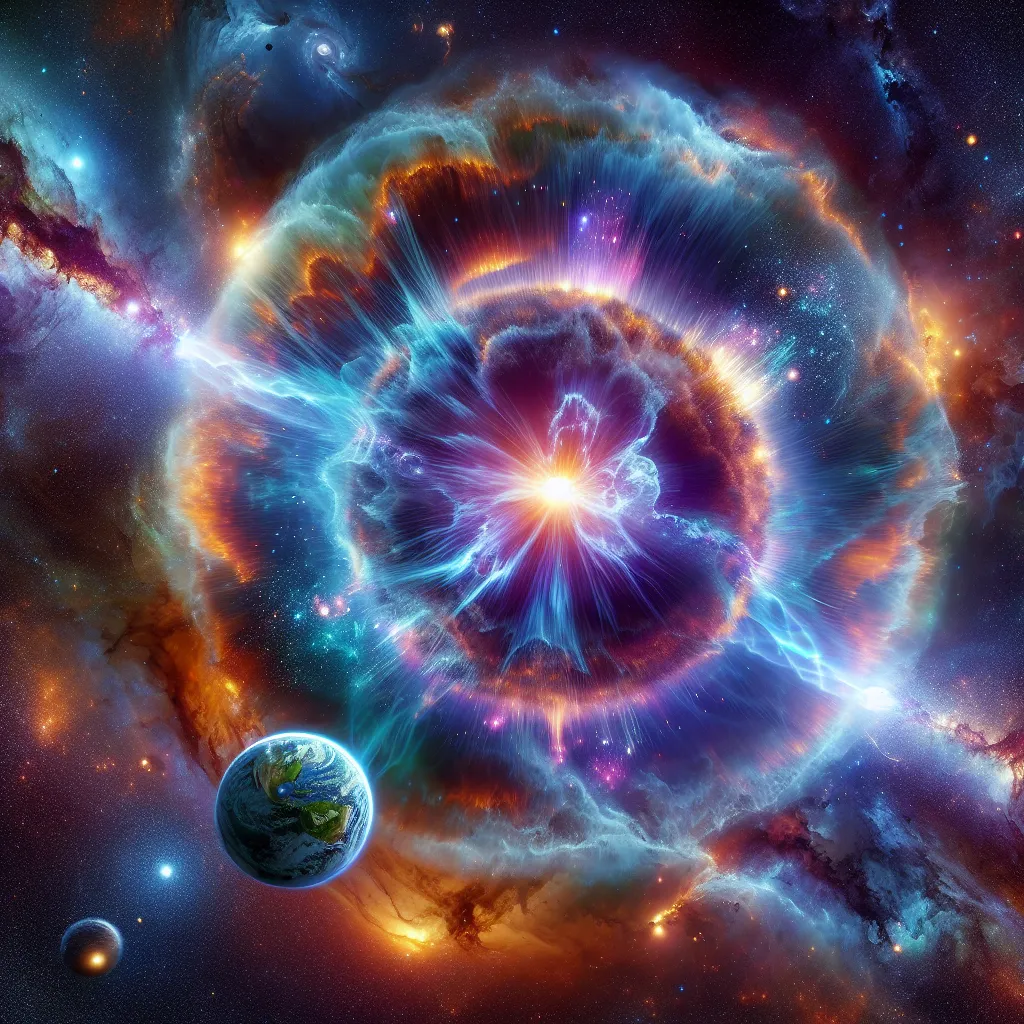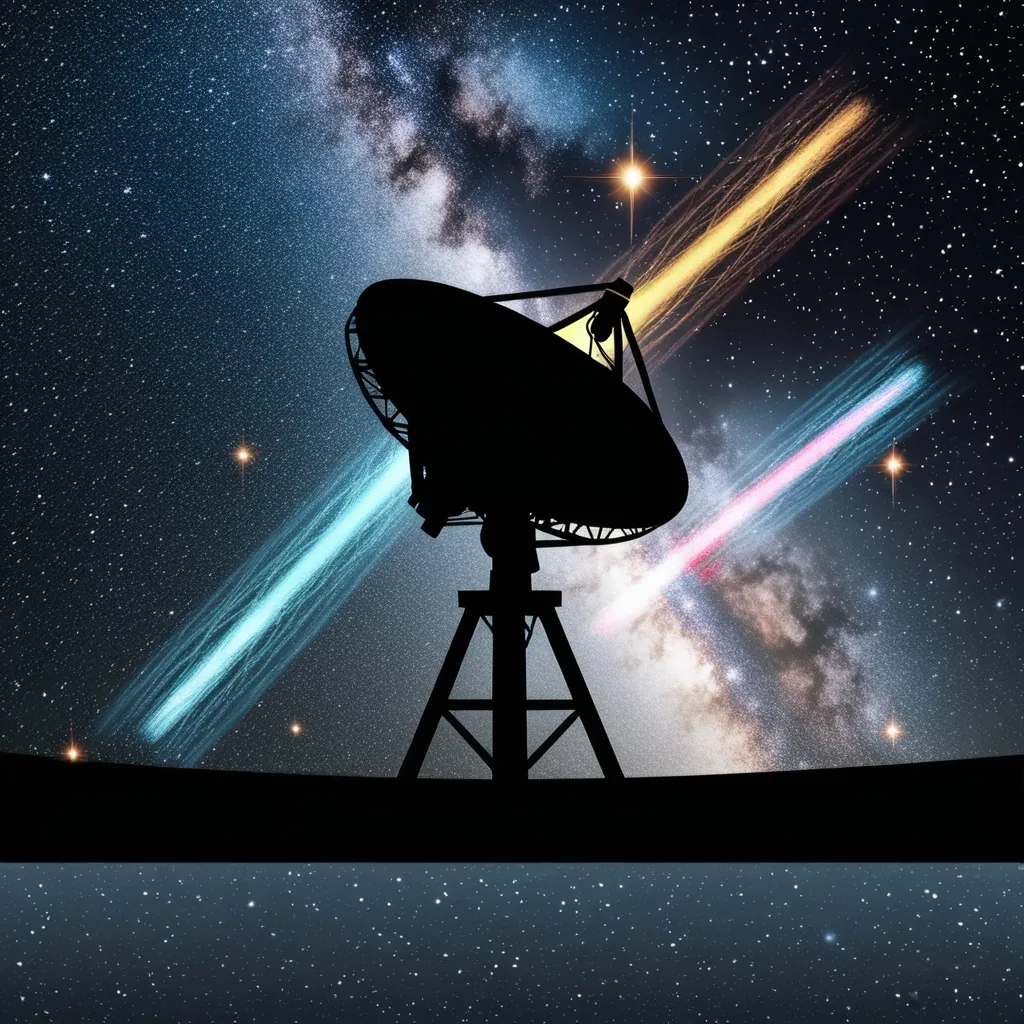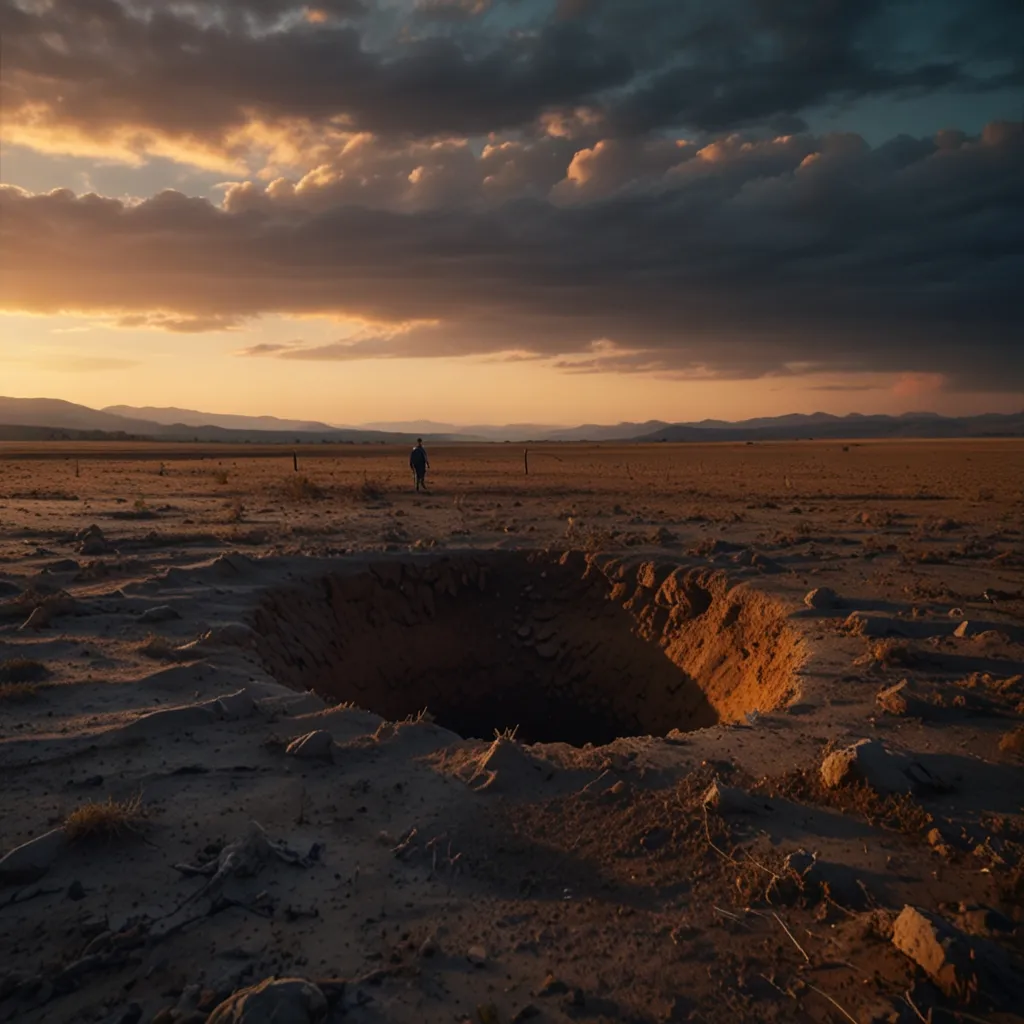Have you ever gazed up at the sky and spotted something that looks like a giant portal to another dimension? These mysterious cloud formations, known as fallstreak holes or hole-punch clouds, are a captivating sight that often leaves onlookers in awe. Let’s dive into the fascinating world of these heavenly portals and uncover the science behind their formation.
Fallstreak holes are a natural phenomenon that occurs in certain types of clouds, typically in mid to high-level altocumulus or cirrocumulus clouds. These clouds are characterized by their thin, patchy appearance or small puffball-like formations. When a fallstreak hole forms, it creates a clear, circular or elliptical gap in an otherwise uniform layer of clouds, often with wisps of precipitation swirling in the center.
The sight of a fallstreak hole can be truly mesmerizing. Imagine looking up and seeing a perfect circle cut out of the clouds, as if some cosmic being had used a cookie cutter on the sky. It’s no wonder that these formations often spark conversations about the paranormal or extraterrestrial activity. However, the reality behind their creation is just as fascinating as any sci-fi explanation.
The key to understanding fallstreak holes lies in a concept called “supercooling.” This occurs when water droplets in clouds remain in a liquid state even though the temperature is below freezing. It might sound impossible, but it happens because these droplets lack impurities like dirt or bacteria that would typically cause them to freeze. They’re just hanging out up there, waiting for something to trigger the freezing process.
Enter aircraft. These man-made marvels of engineering are the primary catalysts for fallstreak holes. When a plane flies through a layer of supercooled clouds, it creates a disturbance that sets off a chain reaction. The wings and propellers of the aircraft create areas of reduced pressure and cooler air, which can cause the supercooled water droplets to freeze into ice crystals.
Once these droplets turn into ice, they become too heavy to remain suspended in the cloud and start to fall. As they descend, they collide with other supercooled droplets, causing them to freeze as well. This process, known as the Bergeron process, leads to rapid crystal growth and the formation of a hole in the cloud cover.
It’s like watching dominoes fall, but instead of tiny rectangles, we’re dealing with countless water droplets suddenly deciding to become ice and plummet from the sky. The result is a stunning visual effect that can make it seem like the clouds are opening up to reveal another world beyond.
One particularly striking example of a fallstreak hole was captured in Eastern Victoria, Australia. The image showed a large, circular gap in the clouds with a rainbow visible at the edge, giving it an otherworldly appearance. It’s moments like these that make you pause and appreciate the incredible beauty that nature can produce.
Similar sightings have been reported in various parts of the world, including Indonesia, where a weather forecaster explained that these holes are formed when planes trigger glaciation in thin cumuliform clouds. It’s a reminder that this phenomenon isn’t limited to any one region - wherever there are suitable clouds and air traffic, fallstreak holes can potentially form.
The eerie and unexpected appearance of fallstreak holes often leads people to speculate about paranormal or extraterrestrial origins. It’s not hard to see why - a perfect circle suddenly appearing in the sky does sound like something out of a sci-fi movie. However, the scientific explanation, while more mundane, is no less fascinating.
Fallstreak holes are not particularly rare, but they are unusual enough to capture attention. They can form frequently throughout the year, especially in areas with high air traffic. If you’re keen to spot one, airports are some of the best places to look, as they are often near flight paths. Just remember to keep your eyes on the sky and not on the planes themselves!
One of the most intriguing aspects of fallstreak holes is their temporary nature. These heavenly portals are short-lived, typically lasting only about 45 minutes from formation to disappearance. Once the air returns to its regular pressure and temperature, the hole-punch cloud vanishes, leaving behind little evidence of its existence except for photos and the occasional conspiracy theory.
It’s this fleeting nature that makes fallstreak holes so special. They remind us to appreciate the moment, to stop and marvel at the wonders of the natural world while we have the chance. In a way, they’re like nature’s own ephemeral art installations, here for a brief time and then gone, leaving only memories and perhaps a few lucky photographs.
The science behind fallstreak holes is a testament to the complex and fascinating interactions between aircraft, cloud physics, and atmospheric conditions. It’s a perfect example of how human activity can inadvertently create beautiful natural phenomena. Every time a plane flies through a supercooled cloud layer, it’s potentially creating a work of art in the sky.
But why do these formations spark so many conspiracy theories? Perhaps it’s because they seem too perfect, too deliberate to be a natural occurrence. The circular shape and sudden appearance of these holes can indeed make them look like portals to another dimension. It’s human nature to seek explanations for the unexplained, and sometimes, the imagination runs wild.
However, it’s important to remember that just because something looks otherworldly doesn’t mean it has an otherworldly explanation. Often, the most extraordinary sights have the most ordinary explanations. Fallstreak holes are a prime example of this - a phenomenon that looks like it could be a gateway to another universe is actually just the result of some frozen water droplets and a passing airplane.
That’s not to say that the scientific explanation makes fallstreak holes any less magical. If anything, understanding the process behind their formation adds another layer of wonder to the experience. It’s a reminder of the intricate balance of forces at play in our atmosphere and how small disturbances can create such dramatic effects.
Fallstreak holes also serve as a great example of how science can explain seemingly mysterious phenomena. They remind us of the importance of scientific literacy and critical thinking. When faced with something unusual or unexplained, it’s natural to speculate, but it’s also valuable to seek out scientific explanations.
For weather enthusiasts and cloud watchers, fallstreak holes are a particularly exciting sight. They’re like the cloud equivalent of spotting a rare bird or witnessing a meteor shower. Each sighting is unique, with its own shape, size, and surrounding cloud formations. Some might have rainbow-like effects at the edges, while others might show more dramatic precipitation trails.
If you’re lucky enough to spot a fallstreak hole, take a moment to appreciate the rarity of the sight. Consider the chain of events that had to occur for this phenomenon to appear before your eyes. A plane, flying at just the right altitude, passing through just the right type of cloud, with just the right atmospheric conditions. It’s a cosmic coincidence, a fleeting moment of natural beauty.
And if you have a camera handy, don’t hesitate to capture the moment. Fallstreak holes make for stunning photographs, especially when caught in the right light. Just remember to enjoy the view with your own eyes too - sometimes, the most memorable experiences are those we witness firsthand, not through a lens.
In conclusion, fallstreak holes, or hole-punch clouds, are a fascinating natural phenomenon that bridges the gap between everyday occurrences and seemingly supernatural events. They’re a reminder of the complex processes constantly at work in our atmosphere and how human activity can interact with natural systems in unexpected ways.
The next time you’re gazing up at the sky and spot a mysterious circular gap in the clouds, remember the science behind this heavenly portal. It’s not a doorway to another world, but rather a beautiful and intriguing display of science in action. And in many ways, that’s just as exciting as any supernatural explanation.
So keep your eyes on the skies, and who knows? You might just be lucky enough to witness one of nature’s most intriguing cloud formations. And when you do, take a moment to marvel at the beauty of our world and the endless wonders it holds - both explained and unexplained.
